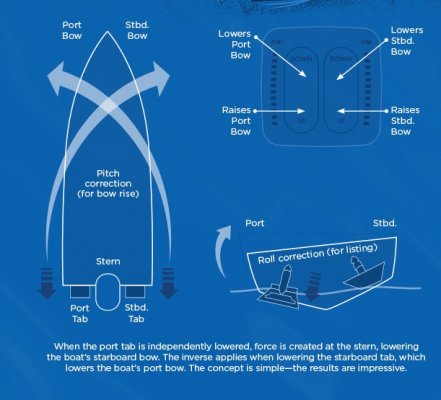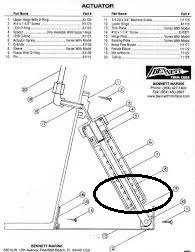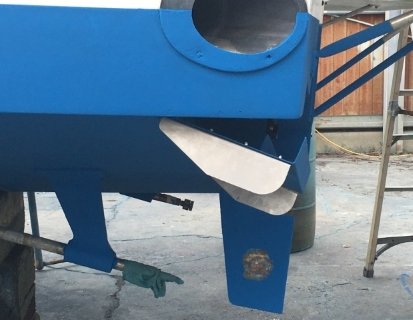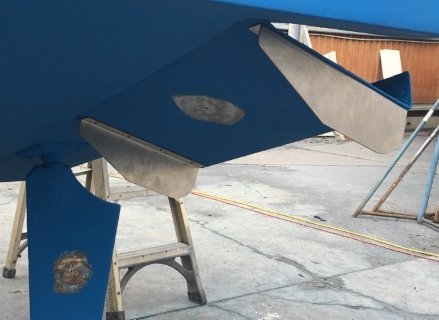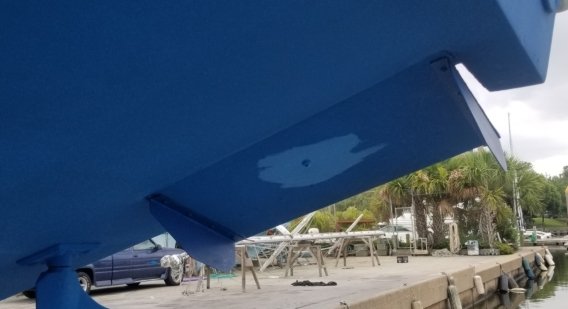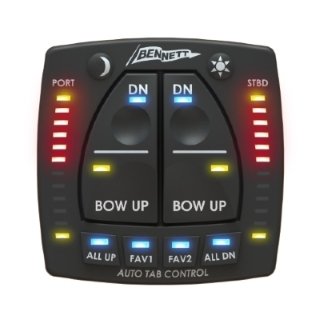Newtrawlerowner
Senior Member
- Joined
- Nov 16, 2019
- Messages
- 327
- Location
- USA
- Vessel Name
- PartnerShip II
- Vessel Make
- 2003 Mainship 400
I have a 2003 MS 400 with dual trim tabs made by Trim Master. Trim Master is no longer in business.
They seem to go down and up (Spring loaded return). The hydraulic power unit (HCU) has been replaced with a pump made by Bennet Marine. My research shows this is a common upgrade when the original HCU fails.
The controls have no indicator of bow up or bow down. When I move the levers up the tabs move down. They are also reversed. Left lever controls right tab and vice versa.
Inspection of the wiring at the HCU shows the harness has been cut and wired to a 6 terminal plug at the new unit. They may have gotten the wiring reversed. I found a wiring explanation on another website and can rewire myself.
Here are my questions.
When you move the lever up, which way does the tab move?
When you retract the tab under way, how quickly does the tab retract? Or how fast do you notice the bow go down?
Out of the water 1 tab retracts rather quickly, the other not so. The retract works by opening a solenoid on the HCU allowing the oil to return to the reservoir. Out of the water the internal spring helps the tab retract.
And does the left lever control the left tab and right lever the right tab?
Thanks in advance for your help.
They seem to go down and up (Spring loaded return). The hydraulic power unit (HCU) has been replaced with a pump made by Bennet Marine. My research shows this is a common upgrade when the original HCU fails.
The controls have no indicator of bow up or bow down. When I move the levers up the tabs move down. They are also reversed. Left lever controls right tab and vice versa.
Inspection of the wiring at the HCU shows the harness has been cut and wired to a 6 terminal plug at the new unit. They may have gotten the wiring reversed. I found a wiring explanation on another website and can rewire myself.
Here are my questions.
When you move the lever up, which way does the tab move?
When you retract the tab under way, how quickly does the tab retract? Or how fast do you notice the bow go down?
Out of the water 1 tab retracts rather quickly, the other not so. The retract works by opening a solenoid on the HCU allowing the oil to return to the reservoir. Out of the water the internal spring helps the tab retract.
And does the left lever control the left tab and right lever the right tab?
Thanks in advance for your help.


